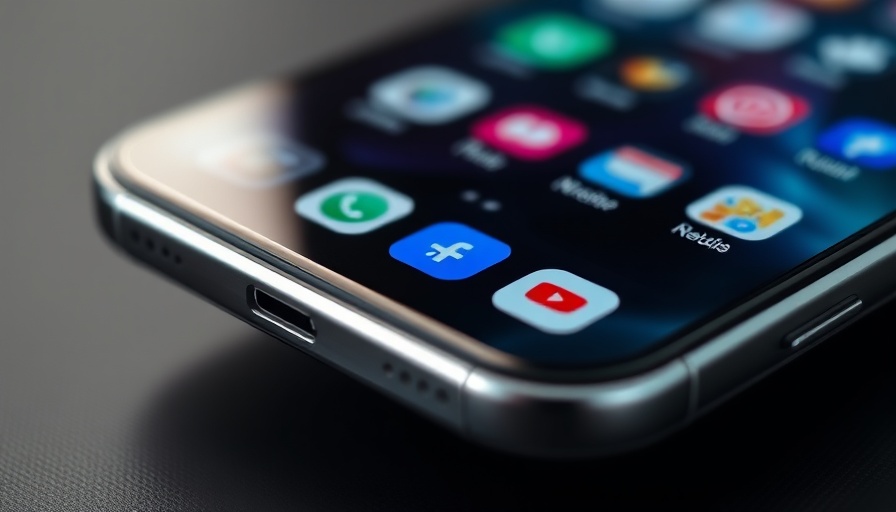
The Next Evolution in Smartphone Design: iPhone 17 Air
Apple's iPhone 17 Air, scheduled for release this fall, is generating significant buzz with its innovative design that veers away from conventional smartphone structures. This new model promises to be sleeker and thinner than ever before, culminating in a device that could reshape expectations about aesthetics and functionality in smartphones.
The Power of Removing the Port
One of the most intriguing aspects of the iPhone 17 Air is Apple's initial plan to design it as a completely port-free device. Imagined without the USB-C connectors that have become a standard, all charging would have been conducted wirelessly while data synchronization would be performed entirely through cloud services. While this radical approach aligns with tech trends towards full wireless functionality, it raises questions about usability.
The decision to abandon the port-free design stemmed from various regulatory concerns, particularly with European Union laws mandating that smartphones must support USB-C. Given Apple's past issues with changing connectivity standards, it makes sense that the company is taking a cautious approach. According to industry insiders, there's still hope that future iPhone models might return to this concept if the public reception of the IPhone 17 Air proves favorable.
Addressing Consumer Concerns
The iPhone 17 Air's potential shift to a port-less design has not been met with universal enthusiasm. Critics argue that such a move could hinder repairability and complicate users’ experiences, particularly those accustomed to wired charging and data transfer. Additionally, the reliance on MagSafe and cloud-only functionalities can be limiting, especially for those who require quick access to their data on the go.
Apple seems to be aware of these challenges, thus prioritizing consumer needs in its final design. Maintaining a balance between innovation and practicality is crucial, particularly for a company that claims to lead in user experience.
The Regulatory Landscape Ahead
Apple's decision-making process is heavily influenced by global regulatory trends. In the context of the EU, the push for uniform charging standards amplifies the importance of integrating some form of wired charging option into the iPhone 17 Air. The challenge lies in harmonizing these regulations while pioneering bold product designs.
Despite these hurdles, Apple is reportedly committed to refining their approach to port-less technology and could reintroduce these features if they receive a positive response from consumers. The anticipated feedback from the iPhone 17 Air’s launch may significantly impact Apple's future product roadmaps.
Lessons from Competitors: The Push for Minimalism
Interestingly, Apple's exploration of a port-less smartphone is not entirely unprecedented; other companies have attempted to eliminate physical ports in their models. For instance, brands like Vivo and Meizu previously experimented with similar designs, though these efforts met with varying degrees of success and customer acceptance. Apple’s more methodical approach may give it the advantage of learning from these earlier failures, allowing it to produce a device that resonates better with an increasingly tech-savvy audience.
What Lies Ahead: Future Innovations
As technology rapidly evolves, the iPhone 17 Air might be just the beginning of a new trend towards ultra-slim devices. If successful, its design could redefine how we perceive smartphones in the future—paving the way for advancements that bridge convenience and performance seamlessly. Apple's willingness to innovate could set the standard for the next generation of smartphones, pushing other brands to consider similar approaches.
As consumers gear up for the release of the iPhone 17 Air, there remains an air of excitement mixed with uncertainty. Understanding the implications of such a bold design choice is vital for tech-savvy professionals, as the future landscape of smartphones is poised for significant transformation. The success of the iPhone 17 Air could lead to new standards in design and functionality across the tech industry.
Interested in staying ahead in technological trends? Explore more of our in-depth analyses on innovation and marketing strategies in the tech industry.
 Add Row
Add Row  Add
Add 




 Add Row
Add Row  Add
Add 

Write A Comment